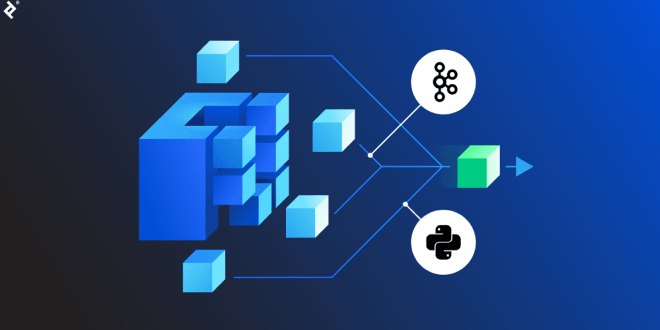In today’s fast-paced digital landscape, ensuring the smooth functioning and scalability of web applications is crucial for businesses to thrive. Traditional monolithic architecture often hinders rapid development and scalability. That’s where containers and microservices come into play, revolutionizing the back-end development process. In this comprehensive guide, we delve into the world of containers and microservices, exploring their benefits, implementation, and how they empower back-end web development for optimal scalability.
Understanding Back-end Web Development
Before we dive into containers and microservices, let’s establish a clear understanding of back-end web development. The back-end, often referred to as the server-side, is responsible for processing data, managing databases, and ensuring seamless interactions between the user interface and the server. It plays a crucial role in delivering dynamic content and functionalities to users.
The Limitations of Monolithic Architecture
Traditional monolithic architecture involves building applications as a single, large codebase. While this approach may be suitable for small projects, it becomes a bottleneck when the application grows. As the codebase expands, the development process slows down, and making changes or updates becomes challenging. Additionally, scaling monolithic applications can be a complex and expensive task.
Introducing Containers: A Scalability Game-Changer
Containers provide an innovative solution to the challenges posed by monolithic architecture. They encapsulate applications and their dependencies, ensuring consistency across various environments. By leveraging containerization technologies like Docker, developers can package applications into portable containers that can run seamlessly on any platform.
Containers enable faster deployment, simplified management, and isolation of resources, making it easier to scale applications efficiently. This scalability is particularly valuable in modern cloud-based infrastructures, where demand can fluctuate rapidly.
Unveiling the Power of Microservices
Microservices take the concept of modularity further by breaking down applications into smaller, independent services. Each service performs a specific task and communicates with others via APIs. This architecture promotes flexibility, scalability, and maintainability.
Unlike monolithic applications, where a single bug can affect the entire system, microservices allow developers to address issues in isolated components without impacting the entire application. This compartmentalization enhances fault tolerance and makes the application more resilient.
Implementing Containers and Microservices
The implementation of containers and microservices requires careful planning and development. Here are the key steps to get started:
Designing Microservices Architecture
Begin by defining the individual services and their functionalities. Each microservice should handle a specific business capability, promoting reusability and maintainability. This requires thorough analysis and collaboration between developers, architects, and stakeholders.
Choosing the Right Containerization Technology
Selecting the appropriate containerization technology is critical for the success of your project. Docker is one of the most popular choices, but other solutions like Kubernetes and OpenShift also offer robust features for managing containers at scale.
Container Orchestration
Container orchestration tools, like Kubernetes, play a crucial role in automating the deployment, scaling, and management of containers. They ensure that microservices run smoothly, adapt to changing demands, and recover from failures automatically.
Monitoring and Observability
Monitoring the performance of microservices is essential to identify potential bottlenecks and improve efficiency. Utilize monitoring tools to track metrics, logs, and traces to gain valuable insights into your application’s behavior.
Ensuring Security
Securing microservices is paramount, as each service represents a potential entry point for attackers. Implement robust authentication and authorization mechanisms to protect sensitive data and prevent unauthorized access.
Advantages of Containers and Microservices
Scalability and Flexibility
Containers and microservices offer unparalleled scalability and flexibility. Developers can scale individual microservices independently, accommodating varying user demands without affecting the entire system.
Faster Deployment
With containers, deployment becomes faster and more straightforward. Developers can build, test, and deploy applications consistently across different environments, reducing the time-to-market significantly.
Enhanced Resource Utilization
Containers optimize resource utilization by sharing the host operating system’s kernel while remaining isolated from each other. This efficient utilization leads to cost savings and better performance.
Continuous Integration and Continuous Deployment (CI/CD)
Containers and microservices are a perfect fit for CI/CD pipelines. They enable seamless integration and deployment of updates and new features, facilitating a continuous and agile development process.
Common Challenges and Mitigations
Complexity and Management Overhead
As applications become more distributed with microservices, complexity and management overhead may increase. Adopting comprehensive monitoring tools and employing skilled DevOps teams can help mitigate these challenges.
Network Latency and Communication
Microservices rely heavily on inter-service communication. Network latency can affect application performance. Mitigate this issue by optimizing communication protocols and employing service meshes.
Data Management
With microservices, managing data consistency and transactions across services can be challenging. Implementing event-driven architecture and employing distributed databases can address these challenges effectively.
Final Words
In conclusion, embracing containers and microservices can revolutionize back-end web development, fostering scalability, flexibility, and efficiency. By breaking down applications into smaller, manageable components and leveraging containerization technologies, businesses can respond to evolving demands swiftly and deliver exceptional user experiences.
Commonly Asked Questions
Q1: Is microservices architecture suitable for all types of applications?
A: While microservices offer numerous benefits, they may not be ideal for every application. Smaller projects may find monolithic architecture sufficient, while microservices shine in complex, scalable applications where modularity and flexibility are crucial.
Q2: What are the main differences between virtual machines and containers?
A: Virtual machines emulate an entire operating system, while containers share the host OS’s kernel, making them more lightweight and efficient. Containers also provide faster startup times and better resource utilization compared to virtual machines.
Q3: How do containers facilitate application portability?
A: Containers package applications and their dependencies, ensuring consistent behavior across different environments. This portability allows developers to run applications on any platform that supports containerization.
Q4: Are there any security risks associated with using microservices?
A: Yes, the distributed nature of microservices can introduce security challenges. Properly securing communication channels, implementing access controls, and performing regular security audits can help mitigate these risks.
Q5: Can containers and microservices work together in hybrid environments?
A: Absolutely! Containers and microservices complement each other. Containerizing microservices simplifies deployment and scaling processes, making them a natural fit for hybrid cloud infrastructures.
 webfily
webfily



